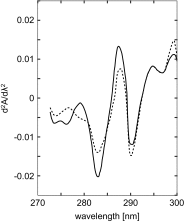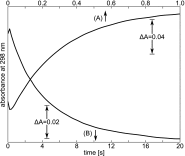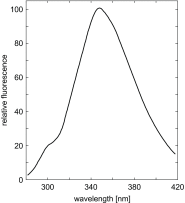UV-Vis spectroscopy of tyrosine side-groups in studies of protein structure. Part 2: selected applications
- PMID: 28510057
- PMCID: PMC4884208
- DOI: 10.1007/s12551-016-0197-7
UV-Vis spectroscopy of tyrosine side-groups in studies of protein structure. Part 2: selected applications
Abstract
In Part 2 we discuss application of several different types of UV-Vis spectroscopy, such as normal, difference, and second-derivative UV absorption spectroscopy, fluorescence spectroscopy, linear and circular dichroism spectroscopy, and Raman spectroscopy, of the side-chain of tyrosine residues in different molecular environments. We review the ways these spectroscopies can be used to probe complex protein structures.
Keywords: Fluorescence; Linear and circular dichroism; Resonance Raman scattering; Tyrosine; UV–Vis absorption.
Conflict of interest statement
Jan M. Antosiewicz declares that he has no conflict of interest. David Shugar declares that he has no conflict of interest.
Figures


















References
-
- Aitken A, Learmonth MP (2009) Protein protocols handbook. In: Walker JM (ed) Springer protocols handbooks. chap. 1. Humana Press, New York, pp 3–6
Publication types
LinkOut - more resources
Full Text Sources
Other Literature Sources

